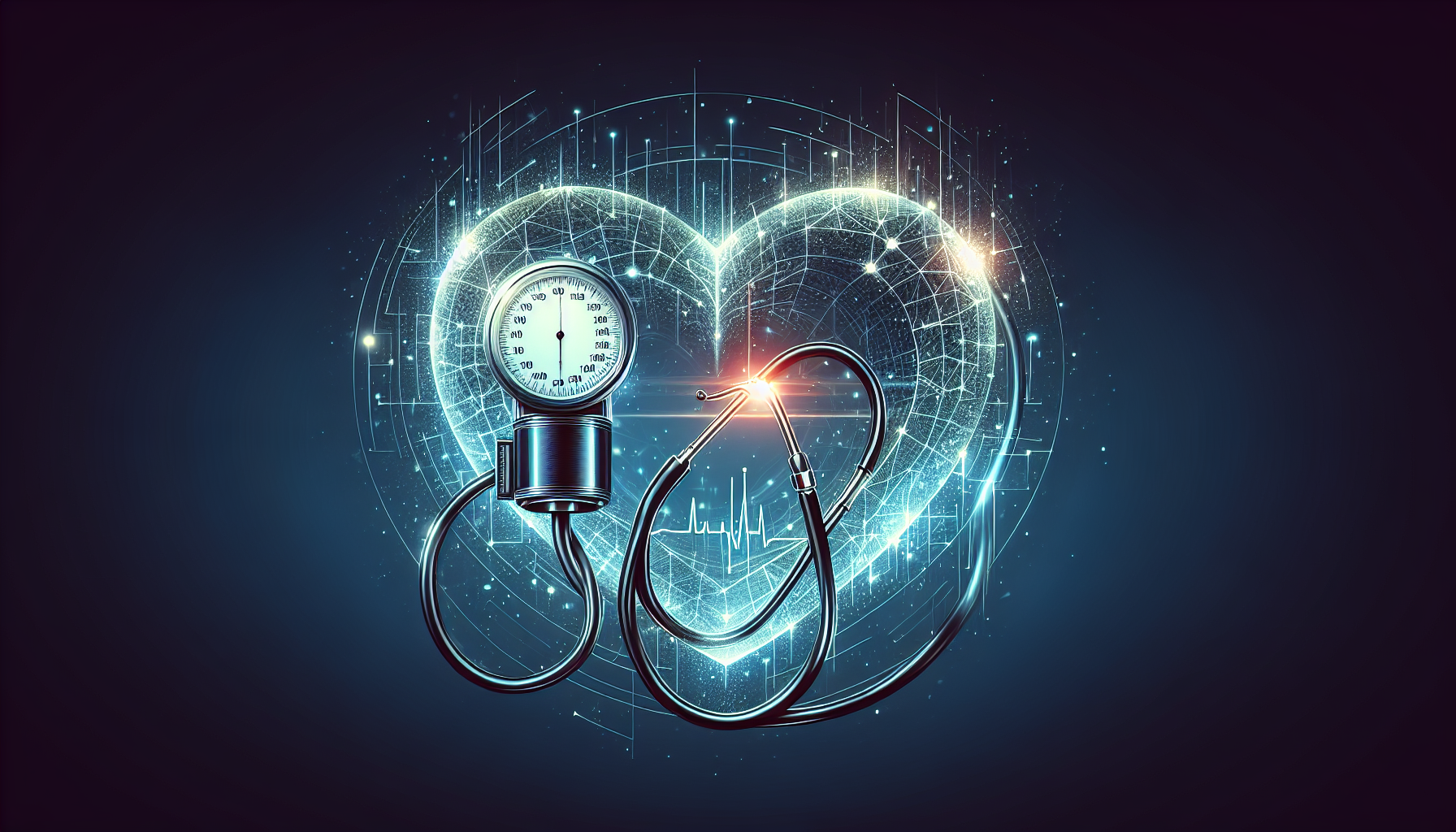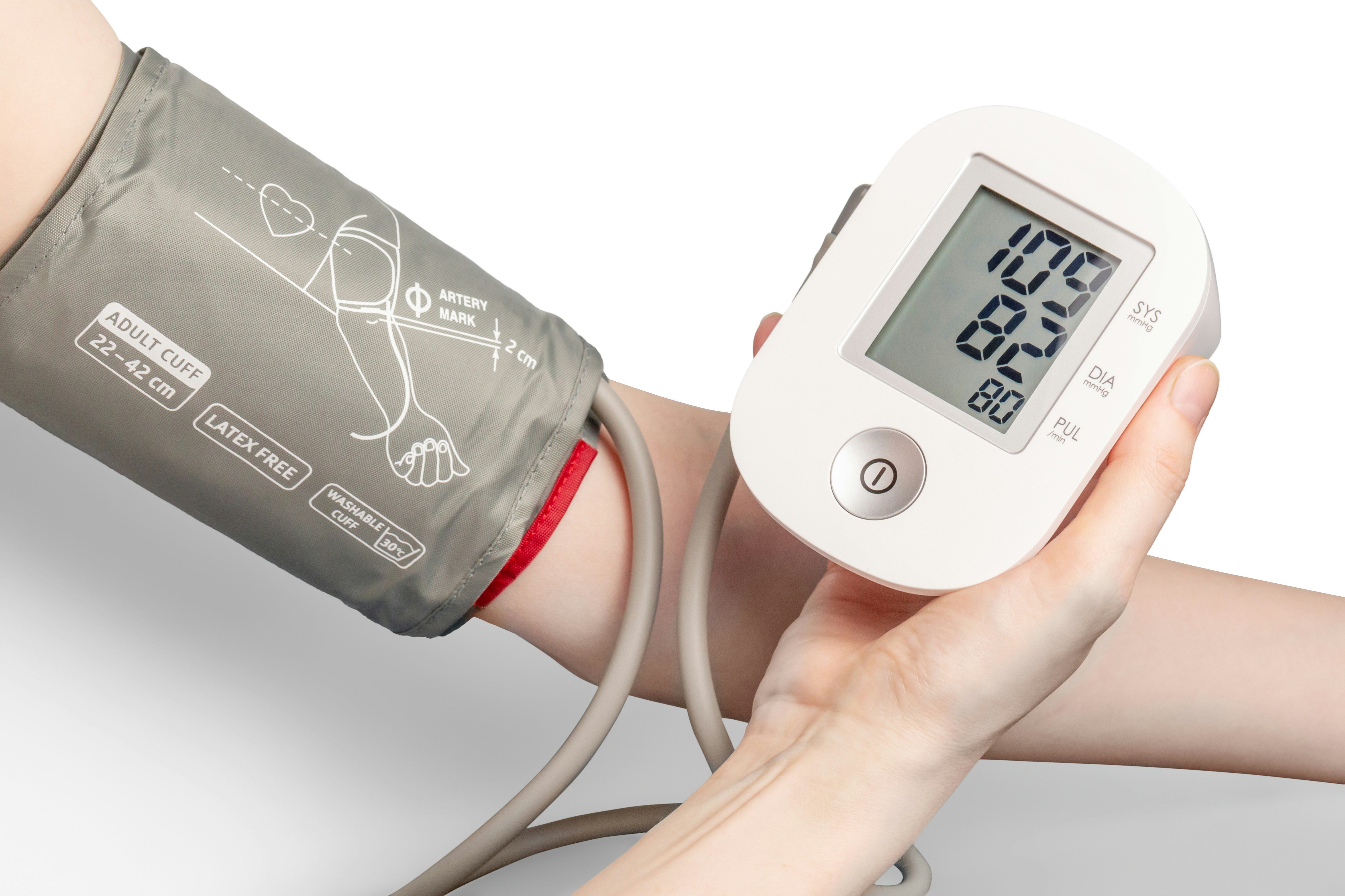Have you ever wondered how to determine if you have high blood pressure? It’s a common question that many people have, and luckily, there are a few simple ways to find out. According to a recent study published in the Journal of the American Medical Association, researchers found that monitoring your blood pressure at home can be an effective method for detecting high blood pressure. Additionally, another study conducted by the National Heart, Lung, and Blood Institute revealed that regularly measuring your blood pressure can help identify the condition early on and improve overall health outcomes. So, if you’re curious about your blood pressure levels, taking matters into your own hands might just be the key.
Discover the Ultimate Weight Loss Secrets Here!
Symptoms
Common symptoms
High blood pressure is often referred to as the “silent killer” because it doesn’t usually cause noticeable symptoms. However, some people may experience certain common symptoms, such as headaches, dizziness, nosebleeds, shortness of breath, or vision problems. These symptoms are not exclusive to high blood pressure and can be caused by various factors. It’s important to consult a healthcare professional for an accurate diagnosis.
Severe symptoms
In rare cases, individuals with extremely high blood pressure may experience severe symptoms, including chest pain, severe headaches, confusion, numbness or weakness in the face, arms, or legs, difficulty speaking, or a sudden loss of consciousness. These severe symptoms may be indicative of a hypertensive crisis, which requires immediate medical attention.
Risks and Causes
Age
As you age, your risk of developing high blood pressure increases. It is more common in individuals over the age of 60. This is because blood vessels naturally become stiffer and narrower with age, making it harder for blood to flow through.
Family history
If you have a family history of high blood pressure, your risk of developing the condition is higher. It is important to inform your healthcare professional about any family history to better assess your risk and ensure proper management.
Obesity
Being overweight or obese puts extra pressure on your blood vessels, increasing your risk of developing high blood pressure. Obesity is also linked to other risk factors such as diabetes and high cholesterol, which further contribute to high blood pressure.
Physical inactivity
Lack of regular physical exercise can lead to weight gain and overall poor cardiovascular health. Regular physical activity helps strengthen the heart and blood vessels, lowering the risk of high blood pressure. It is recommended to engage in at least 150 minutes of moderate-intensity aerobic activity per week.

Click Here for Proven Fat-Burning Strategies!
Diagnosis
Blood pressure measurement
The most common and initial method to diagnose high blood pressure is through a blood pressure measurement. This simple test measures two values: systolic pressure (the pressure in your blood vessels when the heart beats) and diastolic pressure (the pressure in your blood vessels when the heart rests between beats). The measurement is given in millimeters of mercury (mmHg), such as “120/80 mmHg”.
Home blood pressure monitors
To get a more accurate understanding of your blood pressure readings, you can use a home blood pressure monitor. These devices are easy to use and provide convenience for regular monitoring. It is essential to ensure that the monitor meets the standards of accuracy and reliability.
Ambulatory blood pressure monitoring
In some cases, your healthcare professional may recommend ambulatory blood pressure monitoring. This involves wearing a portable blood pressure monitor for 24 hours, which takes readings at regular intervals. It provides a comprehensive picture of your blood pressure throughout the day and night, allowing for more accurate diagnosis and monitoring.
Additional tests
In certain situations, additional tests may be required to assess any underlying causes or complications related to high blood pressure. These tests may include blood tests, urine tests, electrocardiogram (ECG), echocardiogram, or other imaging studies. Your healthcare professional will determine if these additional tests are necessary based on your individual situation.
Complications
Heart disease
High blood pressure puts increased strain on the heart, leading to various forms of heart disease. It can cause the arteries supplying blood to the heart to narrow and harden, increasing the risk of heart attacks, heart failure, and other cardiovascular conditions. It is crucial to manage and control high blood pressure to reduce the risk of heart disease.
Stroke
Uncontrolled high blood pressure is a significant risk factor for stroke. When blood vessels in the brain are damaged or blocked, it can lead to a sudden interruption of blood flow, causing a stroke. It is estimated that high blood pressure contributes to about 50% of strokes. Lowering blood pressure can significantly reduce the risk of stroke.
Kidney problems
Persistent high blood pressure can damage the blood vessels in the kidneys, impairing their function. Over time, this can lead to kidney disease or kidney failure. Keeping blood pressure under control is vital in preserving kidney health.
Prevention
Healthy diet
Adopting a healthy diet that is low in sodium, saturated fats, and cholesterol can significantly lower your risk of developing high blood pressure. The Dietary Approaches to Stop Hypertension (DASH) diet, which emphasizes fruits, vegetables, whole grains, lean proteins, and low-fat dairy products, has been shown to be effective in preventing and managing high blood pressure.
Regular physical activity
Engaging in regular physical activity helps maintain a healthy weight, strengthens the heart and blood vessels, and reduces the risk of high blood pressure. Aim for at least 150 minutes of moderate-intensity aerobic exercise per week, along with muscle-strengthening activities.
Maintaining a healthy weight
Being overweight or obese increases the risk of high blood pressure. By maintaining a healthy weight through a balanced diet and regular exercise, you can significantly lower your risk of developing high blood pressure.
Limiting alcohol intake
Excessive alcohol consumption can raise blood pressure. It is important to moderate your alcohol intake to lower your risk of high blood pressure and its associated complications. The recommended limits are generally one drink per day for women and two drinks per day for men.
Reducing sodium consumption
High sodium intake is closely linked to high blood pressure. Limiting your sodium intake by consuming less processed and packaged foods, avoiding excessive salt use, and choosing fresh, whole foods can help lower your blood pressure. The American Heart Association recommends consuming less than 2,300 milligrams of sodium per day.
Managing High Blood Pressure
Lifestyle changes
In many cases, lifestyle modifications alone can effectively manage high blood pressure. These include adopting a healthy diet, engaging in regular exercise, maintaining a healthy weight, limiting alcohol intake, quitting smoking, and managing stress. The combination of these lifestyle changes can significantly lower blood pressure levels.
Medications
In some situations, lifestyle changes may not be sufficient to control high blood pressure. Medications, prescribed by your healthcare professional, may be necessary. There are various types of medications available, such as diuretics, beta-blockers, ACE inhibitors, calcium channel blockers, and others. It is crucial to take medications as prescribed and follow up with regular check-ups.
Regular check-ups
Regular check-ups with your healthcare professional are essential in managing high blood pressure. These appointments allow for monitoring of blood pressure, adjustment of medications if needed, and assessment of any potential complications. Discuss any concerns or symptoms you may have during these visits.
Monitoring Blood Pressure at Home
Selecting the right monitor
When choosing a home blood pressure monitor, it is important to select one that has been validated for accuracy. Look for monitors that are endorsed by reputable organizations, such as the British Hypertension Society or the Association for the Advancement of Medical Instrumentation. Make sure the cuff size fits your arm properly for accurate readings.
Tips for accurate readings
To ensure accurate blood pressure readings, follow these tips:
- Rest for at least 5 minutes before taking measurements.
- Sit in a comfortable and upright position with your feet flat on the floor.
- Place the cuff on your upper arm at heart level.
- Keep your arm relaxed and supported, avoid crossing your legs or talking during the measurement.
- Take multiple readings, at least 1-2 minutes apart, and record the average.
Recording and tracking results
Keeping a record of your blood pressure readings is valuable for tracking your progress and sharing with your healthcare professional. Use a notebook, an app, or a digital log to record the date, time, and readings. This will help identify any changes or patterns over time, and allow for better management of your blood pressure.
Understanding Blood Pressure Readings
Systolic vs Diastolic
Blood pressure readings consist of two numbers: systolic and diastolic. The systolic pressure is the top number and represents the pressure in your blood vessels when the heart beats and pumps blood. The diastolic pressure is the bottom number and represents the pressure in your blood vessels when the heart rests between beats. Both numbers are important in determining your overall blood pressure level.
Normal vs High blood pressure
Normal blood pressure is typically considered to be around 120/80 mmHg. When the systolic pressure is consistently at or above 130 mmHg and the diastolic pressure is consistently at or above 80 mmHg, it is considered high blood pressure. There are different stages of high blood pressure, ranging from Stage 1 to Stage 2 and hypertensive crisis. Your healthcare professional will assess your individual readings and provide appropriate recommendations.

Seeking Medical Advice
When to consult a healthcare professional
You should consult a healthcare professional if you experience persistent symptoms such as frequent headaches, dizziness, or if you have concerns about your blood pressure. Additionally, if you have a family history of high blood pressure or other risk factors, it is important to discuss with a healthcare professional for appropriate assessment and guidance.
Tests and examinations
Your healthcare professional may perform various tests and examinations to diagnose high blood pressure and assess any underlying conditions or complications. These may include blood pressure measurements, blood tests, urine tests, ECG, echocardiogram, or other imaging studies. These tests help provide a comprehensive evaluation of your health and aid in the management of high blood pressure.
Conclusion
High blood pressure is a common condition that can have serious health consequences if left unmanaged. By understanding the symptoms, risks, and causes of high blood pressure, as well as the importance of diagnosis, prevention, and management, you can take control of your health. Remember to consult a healthcare professional for accurate diagnosis, personalized advice, and regular check-ups to ensure your blood pressure is properly managed and your overall well-being is protected.

